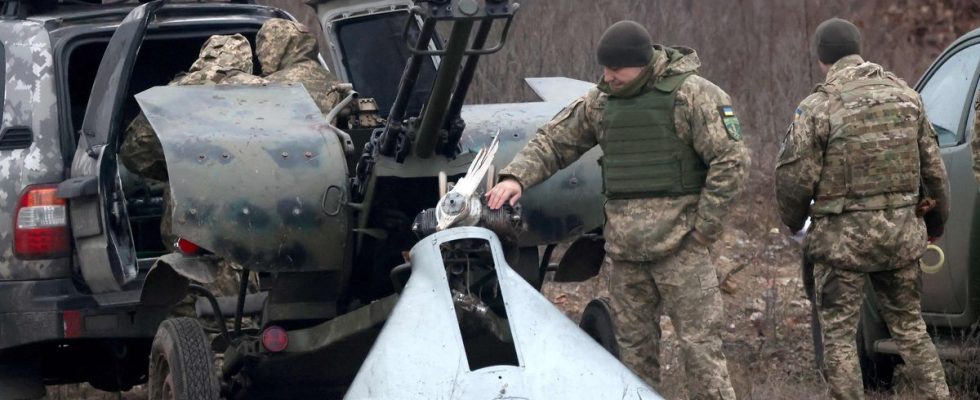Eleven Russian drones out of fourteen were shot down by kyiv during the night from Wednesday to Thursday. A scenario that has been repeating itself for months. But when the majority of these devices launched against Ukraine are destroyed before even doing any damage, why does the Russian army persist in sending them? What strategy is behind this relentlessness in the Ukrainian skies? Can the desired objective succeed?
Wipe out the Ukrainian stockpile
When Russia rains drones in the skies of kyiv or Kharkiv, it plays on the back ground of the war and intends to “continue to harass Ukraine” so that its air defense is not available on the front line, explains Isabelle Dufour, director of strategic studies at Eurocrise. A strategy also used by both camps, and which was already in place last winter.
The other reason, perhaps more “recent”, according to Isabelle Dufour, is the attempt “to exhaust the stock of Ukrainian air defense munitions. And it works “. “We also see that the interception rate is falling,” notes Tatiana Kastouéva-Jean, director of the Russia/NIS Center at the French Institute of International Relations (Ifri). It nevertheless remains significant, “around 70%” according to Isabelle Dufour, and the damage still limited. But on the other hand, “there is no chance that the Russian stock [de drones] is exhausted knowing that Moscow has entered into a war economy,” warns Isabelle Dufour.
Especially since the difference in cost is significant: when Russia sends an Iranian-made Shahed drone estimated at 20,000 euros, a single Patriot missile used by kyiv to destroy it costs 3.80 million euros, according to data from the Center for Strategic and International Studies (CSIS).
Break the resistance
In addition to military motivations, Russia also seeks to “break the Ukrainian will to resist and that of Westerners to support them”, analyzes Tatiana Kastouéva-Jean. To counterbalance victories “achieved at an exorbitant human cost”, Vladimir Putin “is therefore trying to activate this lever of pressure on both the Ukrainians and the West”, she continues. The Russian president is thus keen to send a message to the West: Ukraine’s resistance and support only prolong the suffering of the population and make Ukraine a financial pit.
The consequences, if Russia’s objective is achieved, could be dramatic. “In the long term, it is the financial exhaustion of Ukraine that is at stake, but also that of its supporters,” explains Isabelle Dufour. The day the Ukrainian army no longer has what it takes to defend its skies, “it will be a disaster,” she predicts. The Russians will be able to do what they want and we will be faced with two final options: the collapse of Ukraine or disastrous negotiations, with the loss of the conquered territories, including part of Eastern Donbass and Crimea. .
Ukrainian resilience put to the test
But after almost two years of war, these attacks from the sky do not seem to affect the morale of the population, or less. Compared to last winter, when an entire part of the country was lit by candlelight and could not heat itself because of the damage caused to energy infrastructure, Ukrainians are “better armed, both with electronic generators and with the know-how for rapid repairs,” reports Tatiana Kastouéva-Jean. “Last year’s experience proved that the bombing of Ukrainian infrastructure did not break resilience,” she adds.
The resistance could even emerge stronger, the Ukrainians more united and “united behind President Zelensky”, suggests Tatiana Kastouéva-Jean. However, the Ukrainians will not be able to get out of this alone. The West, which “has begun to experience Ukrainian fatigue”, in the words of the specialist, will have to redouble its efforts to support the war effort.

